AUTHENTICITY
Monument Gallery LA guarantees the authenticity and attribution of each and every one of our objects and promises that due diligence is taken in the form of the below practices at all times with regards to each item we represent. We carefully consider, research, investigate, and analyze every piece before acquisition. And we intentionally limit the size of our collection to a small number of pieces, so we can give each and every object the scrutiny and attention it deserves. This allows us to fully stand by and behind our inventory with utmost confidence.
In general, it can be stated that the determination of whether or not an artifact is authentic and indeed “ancient” comes down to three overarching disciplines or practices:
• Physical observation and Handling
• Provenance, Documentation, and Literary Research
• Laboratory Testing and Analysis
While there may be other factors that can come into play, these three and the techniques employed by or through them almost always bear primary importance.
Physical Observation and handling is the first and although the most subjective, perhaps the most salient. In the hands of a seasoned dealer or a well trained expert, visual observation and tactile handling go way beyond mere impressions and opinions. Documents can be doctored and machines can be flawed, but when you are examining artworks that have stood the test of time, through countless layers of history—that were created by master craftsman working in canonical styles, with very specific predilections and technical capabilities, during very specific periods and cultural milieus—undoubtedly tangible and perceptible patterns can be ascertained. And although this may sound a bit hokey to some, the human eye and brain, and the sensitivity built up over years and years of observation and handling learns to subtly do what machines cannot, to masterfully penetrate not only an items external characteristics and form, but it’s aura, it’s energy, it’s essence. Ancient objects and any items with true age have a discernible soul. One only needs to learn the manner in which to apprehend them. All that being said, of course a little modern day gadgetry in the form of a loupe, a magnifying glass, and a fluorescent or UV inspection light never hurt either. As always, the combination of sense, intuition, and technology should be employed to attain the most comprehensive understanding of any item.
Of course, while all well and good, mere observation of the item in question is only one part of the equation. Investigation of the items background, history, and chain of ownership is the next and very critical stage in the authentication process. Provenance of course is paramount, and proof of an items ownership history will not only be useful towards establishing legality, but oftentimes can make great inroads in the quest for authenticity as well. Whether through esteemed owners, collectors, custodians, institutions, or auction houses, many times the ownership history of a piece can establish who, where, how, and when an object was attributed, studied, categorized, and ultimately authenticated. Items publicly exhibited, written about in academic literature, featured in auction house catalogues, or displayed at various art fairs may have undergone significant scrutiny which can in many cases lead to credible verifications of authenticity. Beyond this, discovering various forms of documentation in things like old appraisals or insurance contracts, family photos and even newspaper clippings can be highly beneficial in putting together the authentication puzzle. And of course further documentation in the form of expert analysis, written descriptions from professors, archeologists, or museum curators, and examination reports from any number of industry professionals can be of great assistance as well.
Last but not least, comes the hard science. Technology has progressed by leaps and bounds in this arena over recent years, and now in many cases can provide us with near flawless results in the search for indisputable authentication. The only short coming being that despite its virtually irrefutable accuracy, it’s cross media capabilities do have their limits. While TL (thermoluminescence) can give us great results for the age of terracotta, and Carbon dating can be virtually fool proof with regards to organic materials such as wood and plant fibers, there are still inadequacies present when it comes to the testing of metals and stone. A variety of methodologies do exist of course from XRF and metalurgical analysis, to CRAM and microscopic examination of production methods, but their results have to be carefully weighed with the other authentication procedures as they cannot provide the level of accuracy found in more objective tests like TL and carbon dating.
